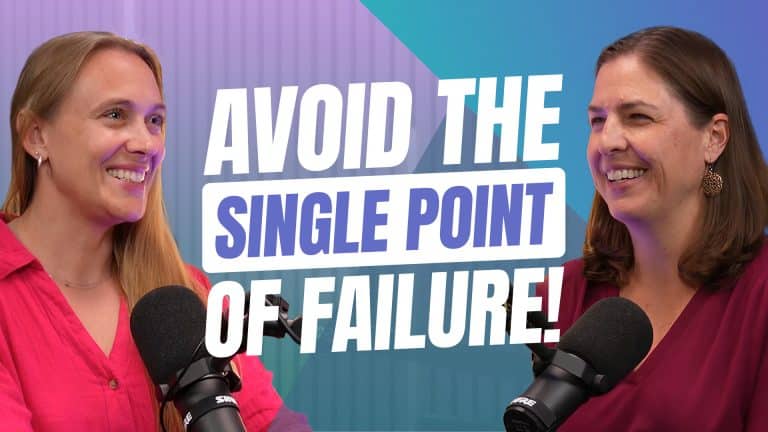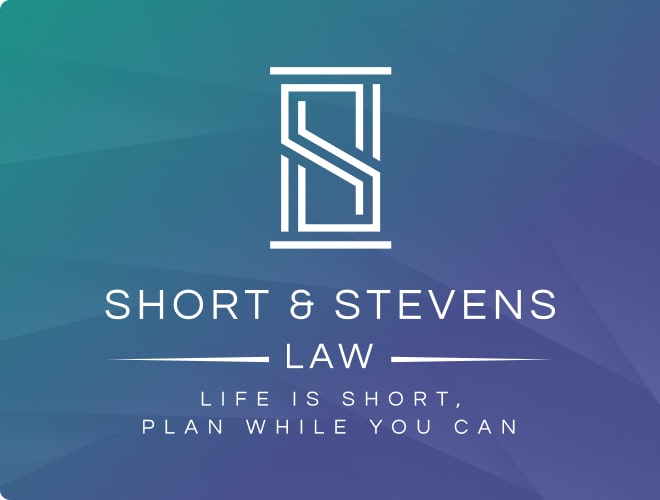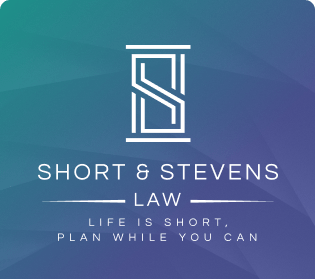Chapter 7 bankruptcy offers a path to financial relief when debt becomes unmanageable. The process takes 3-4 months from filing to discharge and protects your home and car while eliminating most unsecured debts.
But the decision to file isn’t simple. Timing matters. Documentation matters. And understanding what happens at each stage can mean the difference between a smooth process and a contested nightmare.
What Chapter 7 Bankruptcy Actually Does
Chapter 7 is called liquidation bankruptcy because you liquidate non-exempt assets to pay creditors. The key word is “non-exempt.”
You get to keep exempt assets. These include your house (if you’re current on mortgage payments) and your car (if you’re current on the loan). The equity in these assets stays protected as long as you maintain payments.
Everything else gets evaluated by a trustee who decides what’s worth selling. In practice, most people keep nearly everything because trustees look at cost-effectiveness. Selling your used furniture to recover $200 doesn’t make sense when administrative costs exceed the recovery.
The end result is a discharge. This legal document says you no longer owe the debts that were included in your bankruptcy. You get a fresh slate.
The Three-Step Filing Process
Step 1: Preparation and Documentation
You file a petition in federal court along with financial disclosure forms. These forms detail every asset you own and every debt you owe. You also complete a required credit counseling class before filing.
This preparation phase varies widely. Some clients have documents ready and file within weeks. Others take months to gather bank statements, debt records, and asset valuations.
Step 2: The 341 Meeting
About 30-60 days after filing, you attend a 341 meeting (named after Section 341 of the bankruptcy code). A trustee reviews your paperwork and asks questions about your assets and debts.
These meetings take roughly 10 minutes when your paperwork is accurate. The trustee verifies information, looks for assets worth liquidating, and checks for red flags.
Creditors can attend this meeting, but they rarely do. In the majority of cases, zero creditors show up.
Step 3: Discharge
If no creditors object and the trustee approves, you receive a discharge letter 60-90 days after the 341 meeting. This completes the process. Total timeline: 3-4 months from petition to discharge.
What Debts Get Eliminated (And What Doesn’t)
Medical bills disappear. This is the most common reason people file for bankruptcy. A single medical incident without insurance can generate bills that take decades to pay off.
Credit card debt goes away. Any unsecured debt generally gets discharged.
But three types of debt survive bankruptcy:
Tax obligations stay. The IRS doesn’t give you a pass. You can set up payment plans or negotiate with the IRS, but the debt remains.
Child support and alimony continue. These are ongoing obligations that bankruptcy doesn’t touch.
Student loans persist. Discharging student loans requires proving you have no ability to repay them. This is historically very difficult, though post-COVID the process has become somewhat easier. Predatory lending crackdowns are helping borrowers, but discharge remains unlikely for most people.
The Truthfulness Requirement Nobody Talks About Enough
Full disclosure is not optional. List every asset you own.
Yes, that includes gold bars in your safe. Cash under your mattress. Your grandmother’s valuable ring. Everything.
Clients sometimes think, “How would they know about this?” The answer is they look. Trustees review bank statements, transfer records, and transaction histories. They look back months or even years for family transfers.
The reason full disclosure matters: exemptions will protect most of your assets anyway. Nevada has favorable exemption laws. Hiding assets creates the appearance of fraud, which gets your bankruptcy denied.
Getting caught hiding assets is worse than losing them. A denied bankruptcy means you’re still drowning in debt, but now you’ve also committed bankruptcy fraud.
When Creditors Actually Show Up
Most 341 meetings have zero creditor attendance. But creditors do appear in specific situations:
You made large purchases right before filing. Booking expensive trips on a credit card weeks before declaring bankruptcy looks like fraud. The creditor will argue you knew you were filing and intentionally ran up debt you never planned to repay.
You transferred money to family members. Large gifts or loans to relatives trigger scrutiny. Trustees assume you’re hiding assets by moving them to family before filing.
You made suspicious asset transfers. Selling your car to your brother for $1 when it’s worth $10,000 will get questioned.
The lookback period for standard transactions covers several months. For family transfers, they look back further.
Uncontested vs Contested: The Difference Is Everything
Uncontested bankruptcy is the goal. No creditor objects. The trustee doesn’t raise concerns. You never appear before a judge. The process follows the standard 3-4 month timeline.
This describes 99% of cases.
Contested bankruptcy happens when someone objects to your discharge. A creditor claims fraud. Or the trustee believes you hid assets. Or your financial disclosures don’t add up.
Now you’re arguing your case in front of a judge. The timeline extends to six months or more. You need evidence to refute objections.
The difference between contested and uncontested comes down to honesty in your paperwork and avoiding suspicious behavior before filing.
Do You Even Qualify?
Chapter 7 uses a means test to determine eligibility. Your income gets compared to the median income level in your state. The court evaluates your expenses and debt-to-income ratio.
If you pass the means test, you qualify. If you don’t pass, you can’t file Chapter 7.
There’s no minimum debt amount required. Some people have $100,000 in debt but earn enough to make payments. They don’t qualify. Others have $30,000 in debt but can’t make minimum payments on their income. They qualify.
The question isn’t “How much do you owe?” It’s “Can you possibly pay this back?”
If you’re treading water and going under a little more each month with no foreseeable path forward, you’re a candidate for Chapter 7.
Timing Is Everything (And Easy to Get Wrong)
File immediately when:
Lawsuits are pending. Wage garnishments are active. Creditor calls are constant. You’ve had a one-time medical incident that’s now resolved. You broke your ankle without insurance, racked up bills, but now you’re healed and employed.
Wait to file when:
You’re still incurring debt. Medical treatment is ongoing. You have a large tax refund coming (it counts as an asset). You recently made large purchases that look suspicious. You gave gifts to family members without clear justification.
The eight-year rule matters here too. You can only file Chapter 7 once every eight years. If you file too early and then face new debt, you’re stuck. No bankruptcy protection for nearly a decade.
During COVID, many people expected a bankruptcy surge. It didn’t happen. Stimulus payments, eviction moratoriums, and federal support programs kept people afloat. Now those programs have ended. The money ran out. Evictions resumed. Bankruptcy filings are rising.
Should Married Couples File Together?
Joint filing makes sense 99% of the time. When you have joint bank accounts, joint assets, and joint debts, filing separately creates unnecessary complications.
A joint asset gets affected by one spouse’s bankruptcy regardless of who files. Trying to separate joint finances for bankruptcy purposes gets messy fast.
File separately only when you already maintain separate finances. Separate bank accounts. Separate assets. Individual debt obligations. These situations are rare.
The Cost of Filing
The federal court filing fee is roughly $300. Attorney fees range from $1,000 to $3,000. Most attorneys offer payment plans.
Should you hire an attorney? Yes.
You’re going through this process once. Maybe this is the only time in your life you’ll file bankruptcy. Maybe you don’t know anyone who’s been through it. Attorneys see this constantly. They know which exemptions apply. They know how to complete paperwork accurately. They know when creditors are likely to object.
Doing it yourself risks losing assets unnecessarily. Improper disclosure can get your bankruptcy denied. The money you save on attorney fees can cost you thousands in lost exemptions or a contested proceeding.
What Happens the Moment You File
Creditor calls stop immediately. This is the single biggest relief most clients experience.
You’re not scared to answer the phone anymore. You’re not dreading the mail. You’re not hiding from voicemails. The calls stop.
This breathing room happens as soon as your petition is filed. Collections efforts halt. You have legal protection while the process moves forward.
Clients consistently report they wish they had filed sooner. The fear of bankruptcy was worse than the actual process. The relief from constant creditor harassment outweighs the embarrassment of filing.
The Employment Question
Government employers cannot discriminate based on bankruptcy. Private employers can run credit checks for job applications, particularly for positions involving money handling or financial responsibility.
If your job requires a certain credit score or financial reliability, bankruptcy could matter. Most jobs aren’t affected.
Special situations exist. Military security clearances can be impacted. Court positions that require financial responsibility may be affected. Talk to an attorney about your specific situation.
How Bankruptcy Affects Your Credit (The Real Timeline)
Bankruptcy stays on your credit report for 10 years. That’s a long time.
But you can rebuild credit within the first year. Many clients qualify for mortgages in 3-4 years.
Here’s the paradox: You might receive credit card offers immediately after discharge. Creditors know you can’t file bankruptcy again for eight years. You’re actually less risky to them right after discharge than someone approaching their eight-year mark.
Building credit post-bankruptcy is faster than most people expect. The 10-year mark on your credit report doesn’t mean 10 years of financial isolation.
Business Owners Need Extra Caution
Personal bankruptcy doesn’t automatically require business bankruptcy if you’ve kept finances separate.
But the trustee will examine whether you actually kept things separate. If you commingled funds, paid personal expenses from business accounts, or failed to maintain distinct records, your business could be exposed.
They call this piercing the corporate veil. Poor record-keeping during bankruptcy can destroy the separation you thought existed.
Estate Planning Creates Unexpected Problems
Some people add their children to bank accounts for convenience. This creates a joint asset.
When you file bankruptcy, that joint account appears on your disclosure forms. When your child files bankruptcy, your account balance affects their eligibility.
What seemed like simple estate planning now complicates bankruptcy proceedings. Use proper estate planning tools instead. Trusts and beneficiary designations avoid these problems.
The Current Bankruptcy Landscape
Student loans are slightly easier to discharge than before COVID. Predatory lending crackdowns are helping borrowers. The process is still difficult but more achievable than it was five years ago.
Fraud detection has intensified. With lower filing volumes, trustees have more time to scrutinize each case. They’re looking harder at fraudulent transfers and suspicious activity. This may change if filing volumes increase.
Bankruptcy filings are rising as pandemic-era support programs end. The surge that didn’t happen in 2020 is arriving now.
Seven Things Most People Get Wrong About Bankruptcy
1. “I’ll lose everything.” Exemptions protect your home, car, and most personal property. Trustees look at cost-effectiveness. Selling your used furniture isn’t worth their time.
2. “My credit is ruined forever.” You can rebuild within a year. Mortgages are possible in 3-4 years. The impact is real but temporary.
3. “Everyone will find out.” It’s a public filing, but nobody is looking. Your employer might be notified only if they need to verify employment. Most people never discover your bankruptcy.
4. “The 341 meeting will be hours of interrogation.” It takes about 10 minutes. The trustee asks a few questions. Creditors rarely attend.
5. “I can’t file because I don’t have enough debt.” There’s no minimum. Eligibility is based on your ability to pay, not the debt amount.
6. “I should hide some assets.” This guarantees problems. Exemptions will protect most of your property anyway. Hiding assets risks denial of your entire bankruptcy.
7. “I need to wait until things get worse.” If you’re drowning now, waiting makes it worse. File when you know you can’t recover, not after you’ve lost everything trying.
Key Takeaways
- Chapter 7 takes 3-4 months from petition to discharge if uncontested
- Full disclosure is mandatory – exemptions protect your assets, hiding them destroys your case
- Most people keep their house and car if they’re current on payments
- Medical bills are the most common reason for filing, not irresponsible spending
- The 341 meeting typically lasts 10 minutes with no creditors present
- Creditor calls stop immediately when you file the petition
- You can rebuild credit within a year despite the 10-year mark on your credit report
- Timing matters more than debt amount – file when you know recovery is impossible
- Attorney representation costs $1,000-$3,000 and prevents costly mistakes
- You can only file Chapter 7 once every eight years so timing must account for future debt
- Joint filing makes sense for married couples with shared finances
- Student loans, taxes, and family support obligations survive bankruptcy
- Business owners risk exposure if personal and business finances are commingled
Frequently Asked Questions
How long does Chapter 7 bankruptcy take from start to finish? The process takes 3-4 months from filing your petition to receiving your discharge, assuming no creditor objections. The preparation phase before filing varies depending on how quickly you can gather financial documents and complete required credit counseling.
Can I keep my house and car if I file Chapter 7 bankruptcy? Yes, your home and vehicle are exempt assets as long as you remain current on mortgage and loan payments. The equity in these assets stays protected while you continue making payments. You can choose to sell them if these payments are causing financial stress, but most people keep both.
What debts cannot be eliminated through Chapter 7 bankruptcy? Tax obligations, child support, alimony, and most student loans cannot be discharged. Medical bills, credit card debt, and other unsecured debts are typically eliminated. Student loan discharge is possible but requires proving complete inability to repay.
Do I have to go to court for Chapter 7 bankruptcy? You attend a 341 meeting with a trustee, but this isn’t a formal court hearing and usually lasts about 10 minutes. You only appear before a judge if your bankruptcy becomes contested, which happens in less than 1% of cases.
How much does it cost to file Chapter 7 bankruptcy? Court filing fees are approximately $300. Attorney fees typically range from $1,000 to $3,000. Most bankruptcy attorneys offer payment plans since clients are already experiencing financial hardship.
Will my employer find out if I file for bankruptcy? Possibly, but not in most cases. Employers might be notified if they need to verify your employment status for the bankruptcy proceedings. Government employers cannot discriminate based on bankruptcy. Private employers can run credit checks for positions involving financial responsibility.
How soon after filing do creditor calls stop? Immediately. As soon as your petition is filed with the court, creditors must cease all collection activities. This includes phone calls, letters, and legal action. If they contact you after filing, inform them of your bankruptcy and they must stop.
Can I file Chapter 7 if I don’t have much debt? There’s no minimum debt requirement. Eligibility depends on your income compared to your state’s median and your ability to repay debts. Some people with $30,000 in debt qualify while others with $100,000 don’t. The question is whether you can realistically repay what you owe.
What happens if I’m not completely honest on my bankruptcy forms? Hiding assets or providing false information can result in your bankruptcy being denied entirely. Trustees review bank statements and transaction histories, often looking back several months or years. Exemptions will protect most of your assets anyway, making dishonesty both unnecessary and dangerous.
How long until I can buy a house after Chapter 7 bankruptcy? Many people qualify for mortgages 3-4 years after receiving their discharge. You can begin rebuilding credit within the first year post-bankruptcy. While bankruptcy remains on your credit report for 10 years, lenders focus more on your recent payment history and rebuilt credit.




